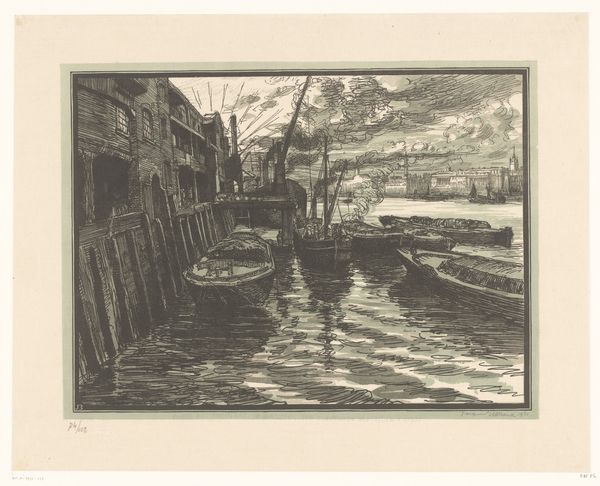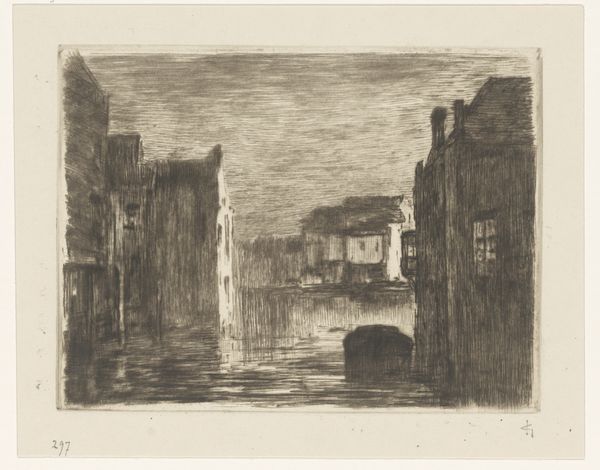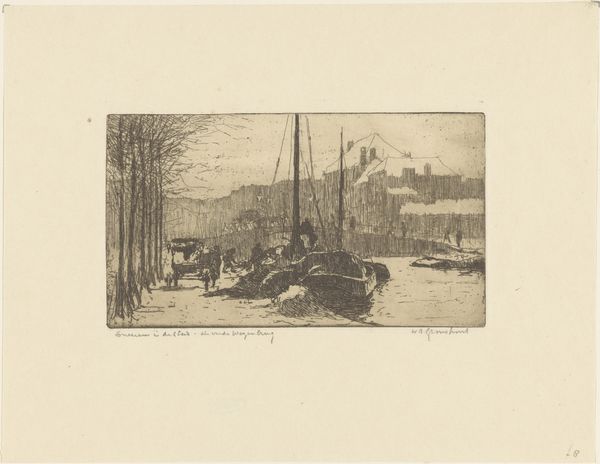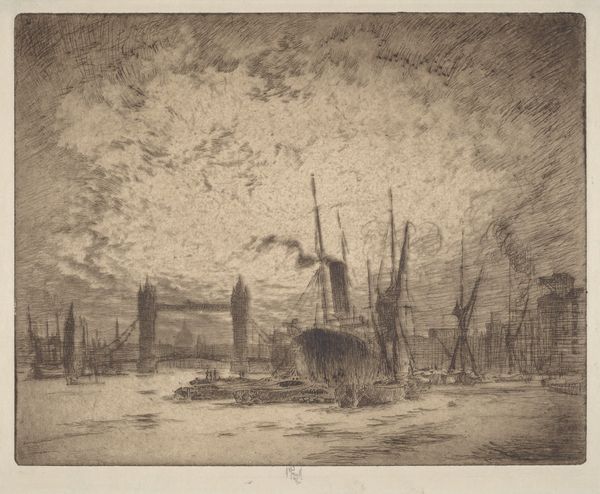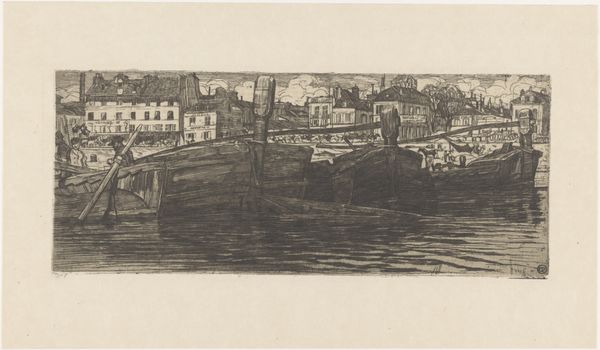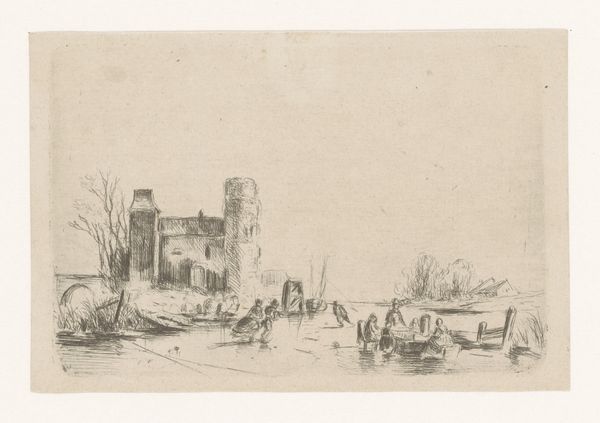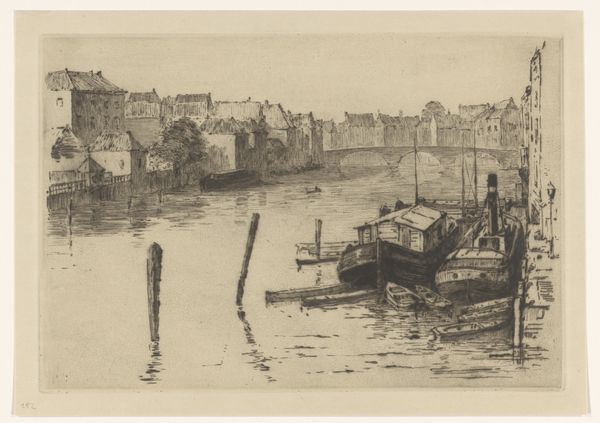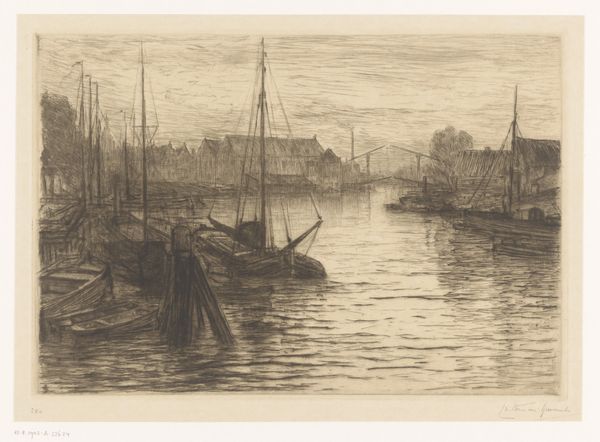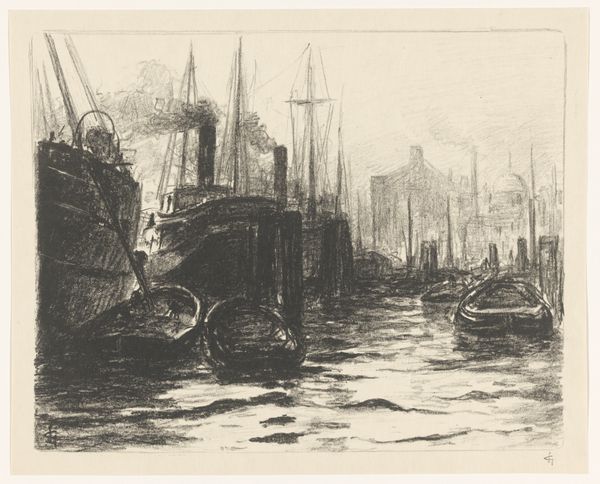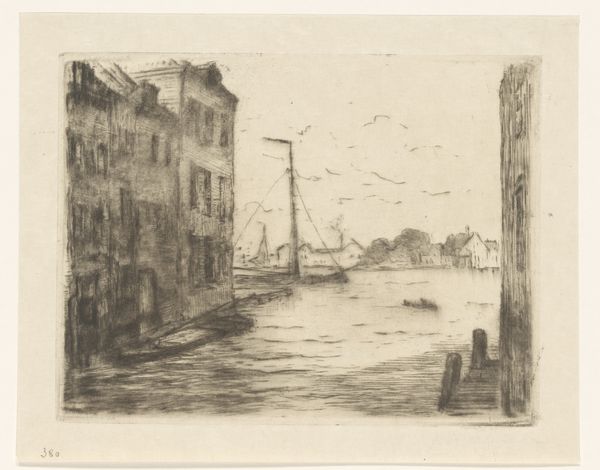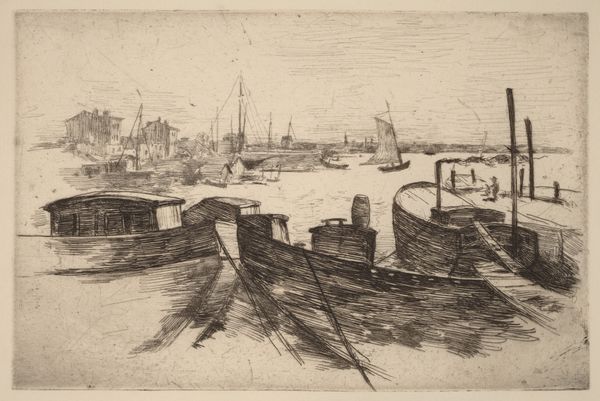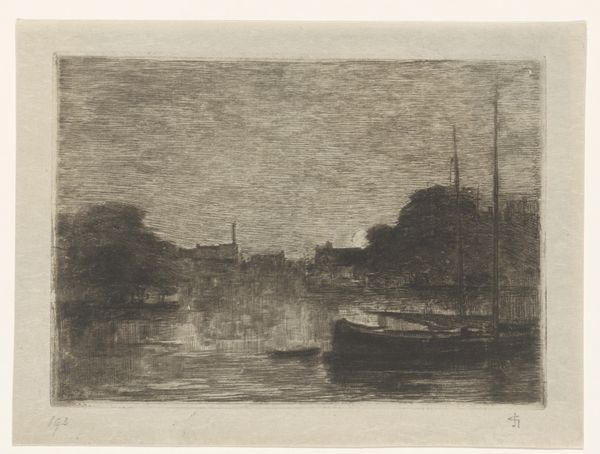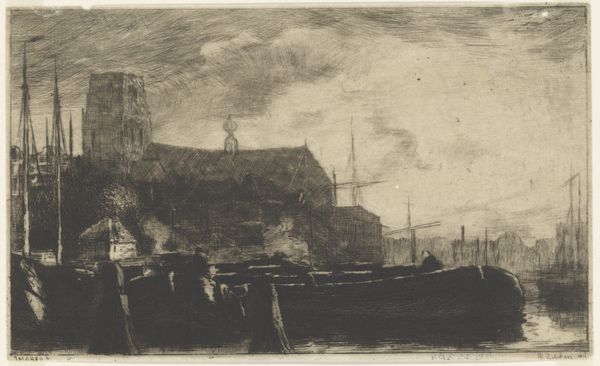
Dimensions: height 140 mm, width 200 mm
Copyright: Rijks Museum: Open Domain
Editor: This is "Dordrecht," an etching by Etha Fles, dating from around 1867 to 1910. It gives off a melancholic feeling, almost like looking at a memory. What strikes you most about it? Curator: The choice of Dordrecht is interesting; the Netherlands were undergoing rapid urbanization and industrialization during this period. How does Fles’s representation, using this older technique, speak to that moment of transition? What is being preserved here? Editor: It's like she's deliberately choosing a nostalgic lens, romanticizing a pre-industrial cityscape, perhaps? Curator: Exactly! And that romanticism is crucial. Consider the politics of landscape. Who has access to the land, who benefits from its resources, and how is that power encoded in the way these scenes are depicted? The baroque influence clashes interestingly with realism, no? Editor: Yes, now I see it! There's a dramatic quality, even in this muted palette, that elevates it beyond just a realistic portrayal of Dordrecht. Almost as if she's mythologizing it. Curator: It pushes us to question: Who are these idyllic landscapes *for*? What ideological work are they performing? What's being left out of the frame? Think about class, gender, access... Editor: It's definitely more than just a pretty picture. The technique and the subject matter combine to make a statement, even if it's subtle, about societal shifts. Curator: Indeed. Looking closely, we can find resistance or at least some dialogue with the dominant narratives of progress. It challenges us to consider whose stories are told and whose are silenced in the grand narratives of history. Editor: Thanks for this different approach, It’s changed how I see the artwork! Curator: And for me. Every artwork becomes richer when interrogated with these lenses!
Comments
No comments
Be the first to comment and join the conversation on the ultimate creative platform.
